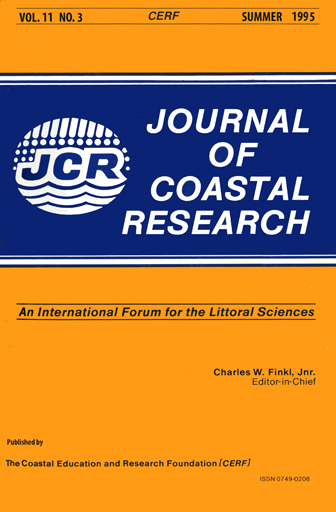Sea-Level Highstand Chronology from Stable Carbonate Platforms (Bermuda and The Bahamas)
Keywords:
Sea level, marine limestone, islands, stratigraphy, amino acid racemization, electron spin resonance, paleomagnetics.Abstract
A history of sea-level highstands representing the past 1.2 my is assembled from geological and geo-chronological data from Bermuda and the Bahamas. Outcrops of marine and eolian limestones exhibit sea-level indicators on tectonically stable islands. Because of the low-lying nature of the islands, they preserve a record of both highstand (limestone) and lowstand (paleosol) events. Geomorphology and sequence stratigraphy are critical for ranking deposit age, while U-series, amino acid racemization (AAR), electron spin resonance (ESR), and paleomagnetics have provided absolute and relative age estimates.
In Bermuda, two early Pleistocene marine sequences are estimated to be > 700 ka and > 880 ka. The younger of the two is associated with a + 22 m marine terrace cut into the older Walsingham Fm, which exposes marine limestones at < + 5 m a.s.l. During the latter half of the middle Pleistocene (Stages 11, 9, and 7; 500 to 180 ka), sea level rose above the present at least three times to approximately +4 m, +4m, and +2.5 m, respectively. Stage 5e includes at least two major positive oscillations of sea level (early at +4 m and late at ≥+6 m). The two 5e marine units are separated by an extensive, rubified protosol, interpreted as evidence of a minor regression (interstadial) of several thousand years. The late Sangamonian (Southampton Fm) is characterized by an extensive skeletal eolianite on high-energy shorelines, offlapped by a - 1 m to + 1 m marine deposit dated at ca. 85 ka. There is no evidence to support a Holocene sea level rising significantly above the present datum.
Unlike tectonic coastline and isotopic studies that require major assumptions of constant uplift and temperature/ice-volume/salinity in order to calculate ancient sea levels, precise elevations of paleo-seduced can be obtained from deposits on stable carbonate platforms. Regardless, the inexact models provided by deep-sea oxygen isotope and U-series dating of uplifted reef terraces are valuable to establish a framework for the timing, duration and relative magnitude of Quaternary high sea levels.


